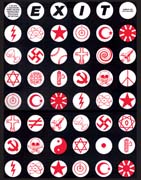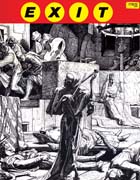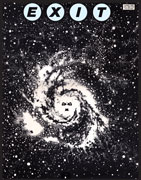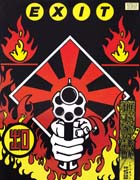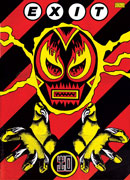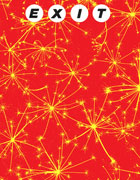|
George Petros: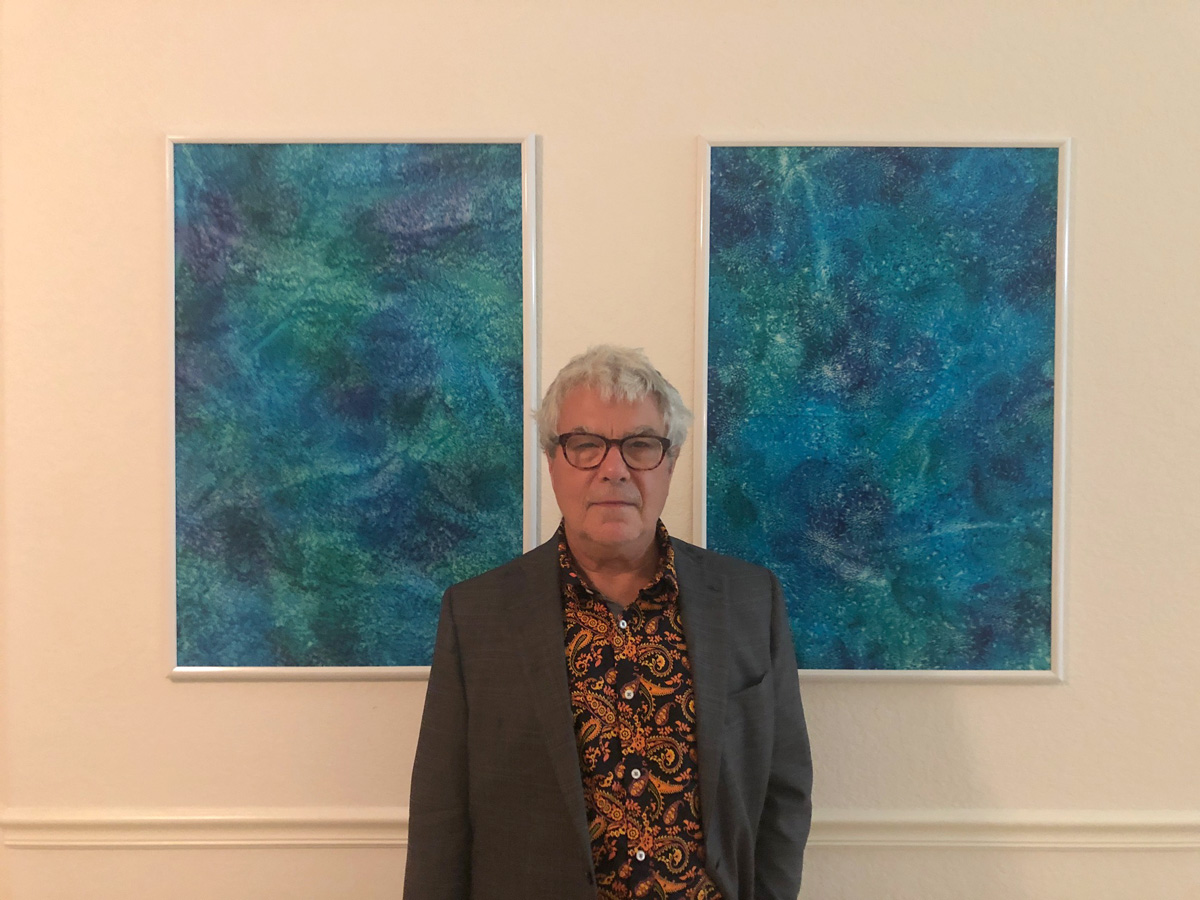
Photo by Robert Lund
George Lawrence Petros (born 11 January 1955) is an American art designer, author, editor, interviewer and illustrator. From 1984 through 1992 he published and edited EXIT, a punk-inspired art and science fiction magazine he founded with Adam Parfrey and Kim Seltzer. From 1992 through 2000 he edited and art-directed Seconds, an all-interview music and culture magazine founded by Steven Blush. From 2000 through 2005 he was a contributing editor of Juxtapoz, the low-brow art magazine founded by Robert Williams, and the senior editor of Propaganda, a goth/industrial music and style magazine founded by Fred H. Berger. He is the author of Art That Kills: A Panoramic Portrait of Aesthetic Terrorism 1984-2001, The New Transsexuals: The Next Step In Human Evolution, and the editor of American Hardcore: A Tribal History. His art and writing have appeared in Heavy Metal, Thrasher, Paper, Screw, Apocalypse Culture II, ArtSync, and on DEVO album covers. Petros was born in Chicago, Illinois. His father, uncle and grandfather were plumbers and mechanical engineers. The family moved to Clearwater, Florida, in 1968. Petros returned to Chicago in 1978, where he studied commercial art at Ray-Vogue Institute of Design and worked as an engineering technician for the City of Chicago. In 1982 he moved to New York City. He has two daughters, Erin and Christine. Magazine workEXIT EXIT (ISSN 0883-9158) was a New York City-based large-format alternative comic art, science fiction and graphics magazine published from 1984 through 1992. It was founded in 1983 by Petros, Adam Parfrey and Kim Seltzer, with R. Bruce Ritchie joining shortly afterward. Five issues were released; a sixth was partially completed. The magazine's history is divided into two eras: the first, from inception through 1987, was characterized by the collaboration of Petros and Parfrey; and the second, spanning from Parfrey's 1987 departure until the project's end, was characterized by Petros's work with Michael Andros, Salvatore Canzonieri, Robert N. Taylor and John Aes-Nihil. Science, science fiction, fringe politics and alternative history influenced EXIT's graphic style. Some of the magazine's contributors worked in a form Petros christened Serial Art, which adopts the techniques of timelines, graphs and diagrams to show changes, processes, and the flow of situations. Serial Art also appropriates techniques of comic art and film storyboards. Other contributors worked in a form Ritchie christened Propagandart, which adopts principles of advertising and propaganda in order to manipulate emotions and opinions. EXIT also presented alternative comics, photomontage, photography, poetry and incendiary literature. In his introduction to the compilation The EXIT Collection (Tacit Press, 1998), Petros describes EXIT as "An outlaw Pop Art magazine in opposition to both the underground and the establishment. It was a forum for extreme ideologies and inclinations manifested as political pornography, psychosexual terrorism, scientific threats and infernal texts. It was graced by contributions from the best artists and writers in America — famous, infamous, and unknown." Among the many artists and writers who contributed to EXIT were Robert Williams, Mark Mothersbaugh, JG Thirlwell, Genesis P-Orridge, Joe Coleman, Steven Cerio, Mike Diana, Alex Grey, Richard Kern, Lydia Lunch, Nick Zedd, Raymond Pettibon, Boyd Rice, S. Clay Wilson, GG Allin, H. R. Giger, Marilyn Manson, Nikolas Schreck, Zeena LaVey, Jim Blanchard and Jonathan Shaw. Notorious criminals whose artwork appeared in the magazine include John Wayne Gacy, Henry Lee Lucas, Richard Ramirez, James Earl Ray and Ottis Toole. Seconds Seconds (ISSN 1052-5025) was a New York City-based all-interview music, culture and true crime magazine founded in 1987 by promoter and DJ Steven Blush. The magazine was noteworthy for its fusion of punk rock and heavy metal sensibilities. It also covered R&B and hip hop. Seconds presented itself as pursuing "The Art of the Interview", a phrase that appeared on its cover from 1995. The final issue appeared in 2000. Petros began writing for Seconds in 1987; in 1992 he became editor and occasional art director. The magazine expanded its coverage to include individuals involved with science and science fiction. Under Petros's editorship the magazine presented interviews with, among others, Charles Manson, Karlheinz Stockhausen, Henny Youngman, Bauhaus, Joan Jett, Marilyn Manson, Dan Aykroyd, James Earl Ray, Anton LaVey, White Zombie, Bijou Phillips, characters from Andy Warhol's Factory Family, David Crosby, John Waters, Richard Ramirez, Henry Lee Lucas, Ed "Big Daddy" Roth, Sandra Bernhard, David Cronenberg, Tiny Tim, musicians contributing to the History of Jamaican jazz, Ronnie Biggs, Vincent Bugliosi, Philip Glass, Marianne Faithfull, Danzig, Metallica, Ron Jeremy, Lyndon LaRouche, Martin Denny, Esquivel!, Jim Jarmusch, Nick Cave, Ravi Shankar, Camille Paglia, Boy George, The Moody Blues, Wayne Kramer, Malcolm McLaren, Moby, Traci Lords, The Black Crowes, Afrika Bambaataa, Carlos Santana, Barry White, Steve Reich, Jimmy Page & Robert Plant, Bootsy Collins, Sammy Hagar, David Lee Roth, Travis Tritt and Debbie Harry. Petros's personal interview subjects for Seconds included Wendy Carlos, Timothy Leary, John McLaughlin, Jayne County, Dr. Fiorella Terenzi, Ed Sanders, Allen Ginsberg, representatives of SETI (Search for Extra-Terrestrial Intelligence), David Bowie, JG Thirlwell, Yoko Ono, Ray Conniff, Space Shuttle commander Capt. Robert L. "Hoot" Gibson, Alvin Lee, Harlan Ellison, J. G. Ballard, Gail Zappa, Man or Astro-man?, the editors of High Times magazine, DJ Spooky that Subliminal Kid, Jonn Serrie, Steven Cerio, Jim Blanchard, Jean-Luc Ponty, Pharoah Sanders, P.M. Dawn and Roger Dean. Juxtapoz Juxtapoz (ISSN: 1077-8411) is a San Francisco-based art and culture magazine founded in 1994 by Robert Williams to define and celebrate urban alternative and underground contemporary art. Juxtapoz is published by High Speed Productions, the same company that publishes Thrasher skateboard magazine. It connects psychedelic and hot rod art, graffiti and street art to more historically-recognized genres of art like pop, assemblage, old masters painting, and conceptual art. Juxtapoz originally reflected Williams' own Kustom Kulture sensibility which, when emulated by other artists, came to be known as lowbrow art. Petros began writing for the magazine in 2000 and in 2001 was appointed contributing editor. His interview and essay subjects included Mark Mothersbaugh, Syd Mead, Cal Schenkel, Virgil Finlay, H. R. Giger, Homer Flynn, Peter Max, Alex Grey, American Hardcore Punk Art, Roger Dean, Paul Booth, Jonathan Shaw, Spider Webb, Joe Coleman, Frank Frazetta, Yoko Ono and John John Jesse. His final article appeared in 2005. Propaganda Propaganda was a Gothic subculture magazine founded in 1982 by New York City photographer Fred H. Berger. It focused on all aspects of goth culture, including fashion, sexuality, music, art, literature, body modification, BDSM, paganism, role-playing, vampirism, and fetishism. Propaganda was the longest-running and most popular gothic subculture magazine in the United States. Petros began writing for the magazine in 2000 and in 2001 was appointed senior editor. He interviewed musicians and artists such as Marilyn Manson, Genesis P-Orridge, Genitorturers and H. R. Giger, as well as providing news content for the Propaganda website. Books
Music projects
Video projects
EXIT Magazine:
EXIT Magazine (ISSN 0883-9158) was a New York-based large-format alternative comic art and graphics magazine published from 1984 through 1992. It was founded in 1983 by George Petros and Adam Parfrey, with Kim Seltzer joining shortly afterward. Five issues were released; a sixth was partially completed. The magazine’s history is divided into two eras: the first, from inception through 1987, was characterized by the collaboration of Petros and Parfrey; and the second, spanning from Parfrey’s 1987 departure until the project’s end, was characterized by Petros’s work with J.G. Thirlwell, Robert N. Taylor, Michael Andros and Salvatore Canzonieri. ContentsScience, science fiction, fringe politics and alternative history influenced EXIT’s graphic style. Some of the magazine’s contributors worked in a form they christened Serial Art, which adopts the techniques of timelines, graphs and diagrams to show changes, processes, and the flow of situations. Serial Art also appropriates techniques of comic art and film storyboards. Other contributors worked in a form they christened Propagandart, which adopts principles of advertising and propaganda in order to manipulate emotions and opinions. EXIT also presented alternative comics, photomontage, photography, poetry, and incendiary literature. EXIT reflected the confrontational punk rock and hardcore punk attitudes of the 1980s. It drew upon the prevailing nihilism of New York’s Lower East Side. It presented art and writing considered controversial from contemporaneous political and sociological perspectives. For example, some of the magazine’s content endorsed the eradication of boundaries between Left and Right. Notorious historical figures appeared in iconic form. Some of the magazine’s content dealt with psychopathic social phenomena such as serial killers and mass murderers. Disparate genres such as scientific illustration and pornography came together in graphic form. In his introduction to the compilation The EXIT Collection (Tacit Press, 1998), George Petros describes EXIT as “… an outlaw Pop Art magazine in opposition to both the underground and the establishment. It was a forum for extreme ideologies and inclinations manifested as political pornography, psychosexual terrorism, scientific threats and infernal texts. It was graced by contributions from the best artists and writers in America — famous, infamous, and unknown. ContributorsPublisher and editor George Petros was a writer, illustrator and graphic artist. Editor Adam Parfrey was a writer and montage artist. Associate editor Kim Seltzer was a painter and illustrator. Associate editor R. Bruce Ritchie was a writer and graphic artist. Editor Salvatore Canzonieri was a writer, graphic artist, musician and healer. Several contributing editors worked on the magazine: Michael Andros was a montage artist, poet and archivist. Nancy Keating was an art director and illustrator. Robert N. Taylor was a writer, illustrator, graphic artist and musician. John Aes-Nihil was a filmmaker and archivist. Among the many others who contributed to EXIT were Robert Williams, Mark Mothersbaugh, Genesis P-Orridge, Joe Coleman, Steven Cerio, Mike Diana, Alex Grey, Richard Kern, Lydia Lunch, Nick Zedd, Raymond Pettibon, Boyd Rice, S. Clay Wilson, GG Allin, H.R. Giger, Marilyn Manson, Nikolas Schreck, Zeena LaVey, Jim Blanchard and Jonathan Shaw. Notorious criminals whose artwork appeared in the magazine include John Wayne Gacy, Henry Lee Lucas, Richard Ramirez, James Earl Ray and Ottis Toole. FormatEXIT’s interior was black and white. Five of its six covers were printed in black, red and yellow; a sixth (issue #3) appeared in black and white and metallic mauve. Unlike most mass-market magazines available at the time, which measured eight-by-eleven inches, EXIT was printed at an oversized eleven-by-fourteen inches. This made it stand out but also limited its distribution since it often did not conform to display-rack sizes. Early issues were printed on 60 lb. paper stock; the final two issues were printed on high-quality newsprint. The magazine’s editors preferred for the title to always appear in all upper-case letters: EXIT. |
||||||||||||||||||||||
